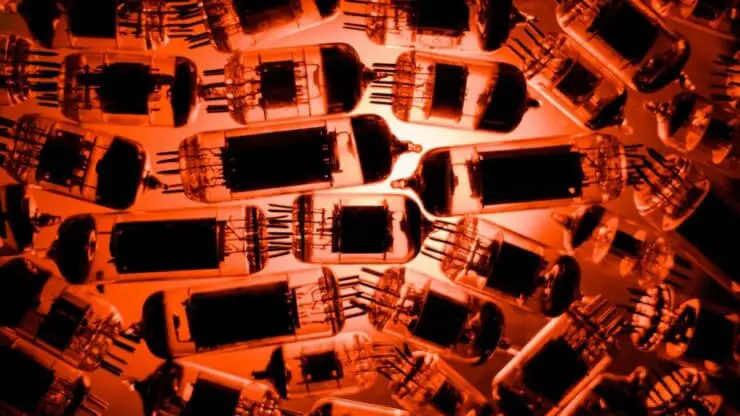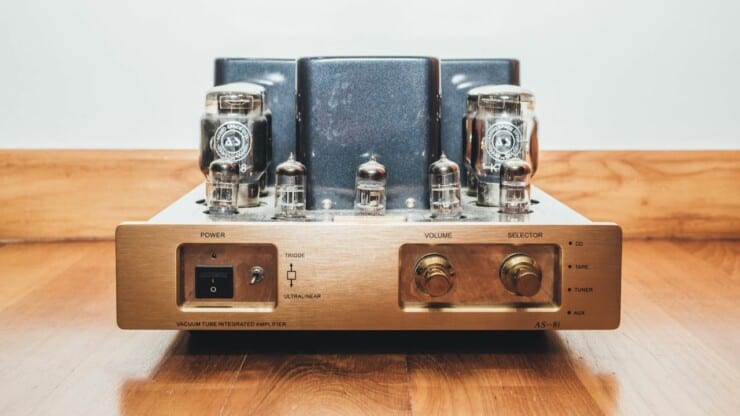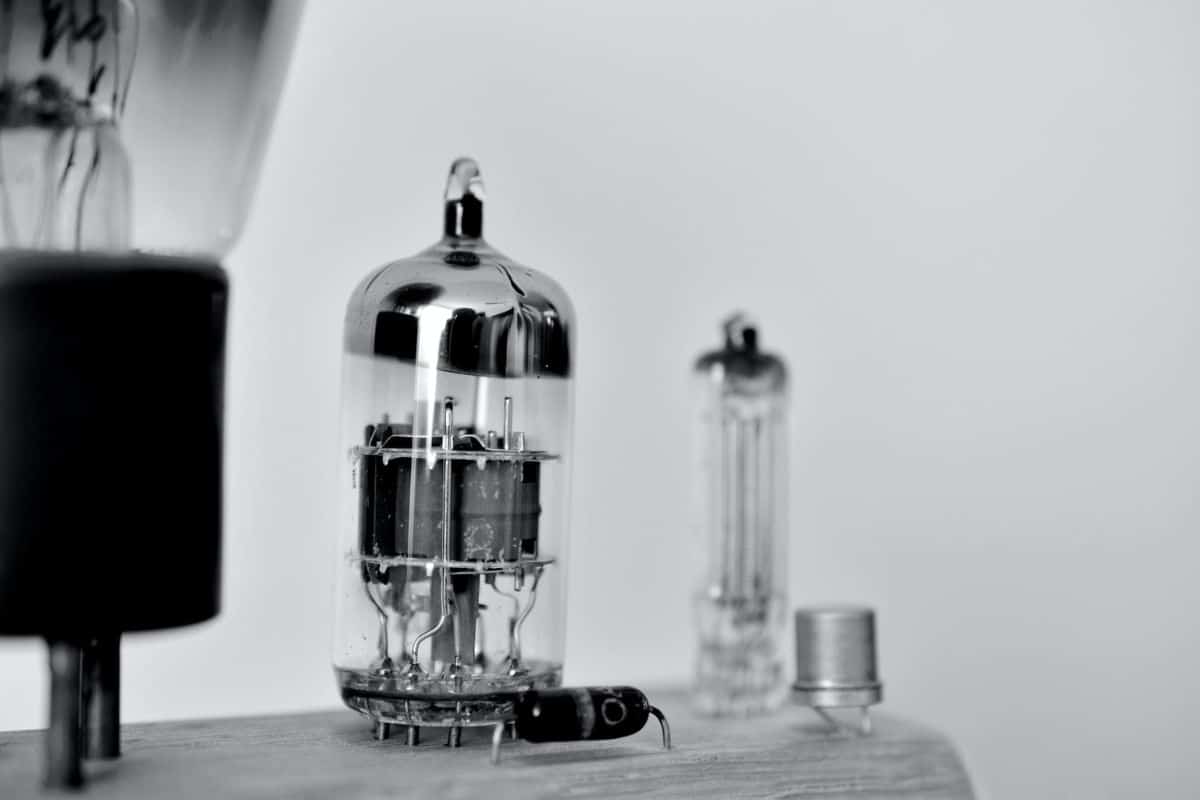Are you in the market for a new guitar amp, but you’re confused between what do tube amps and solid-state amps sound like? You’ll be glad you landed on this article as all your doubts will be cleared here.
Tube amps sound like absolute bliss and are a superior option in terms of distortion and sound quality. The distortion and even-order harmonic distortion make tube amps a huge hit among audiophiles and guitarists.
In this article, you’ll get to know all about the tube amps, what does a tube amp sound like, why do tubes sound better in guitar amps than transistor circuits, and more. Stick around to know all the answers that you’re looking for.
What does a tube amp sound like?
Tube amps sound amazing due to the euphonic distortion that they add to the music. There are many other reasons for that and you’ll get to know about them here. There are many subtle effects that only musicians and dedicated music lovers can observe. However, casual listeners usually do not notice these effects. Sometimes, these differences could be so obvious that casual listeners can comment that the music sounds better when using tubes at home. Tube amps measure rather poorly in the lab due to added distortions. These distortions are normally a big part of what makes them sound so good.
Even today, with the all-digital infrastructure from recording studio to home, professional studio mics have long been using tube preamps inside the mic themselves. Today, the outputs are fed to tube amps before being digitized for recording, mixing, and distributing. Tubes are used so much due to the music created sounds better, smoother, cleaner, and warmer.
>>> Click here to read our review about the Top 15 Best Tube Amps <<<
This is why guitar amps are used for creating music professionally. The way the tubes distort when pushed to the edge is far more musical than the artificial sounds coming from transistor amps when overdriven.
Progressive distortion
Not only is tube amp distortion harmonious, but it’ll also increase as things start getting louder. This is precisely what happens during musical performances. As instruments go louder or as you’re hitting a percussion instrument more strongly, they’ll generate more harmonic content. As notes start decaying, the percentage of harmonic content will drop again. Tube amps will mimic this. A decent tube amp will increase its distortion directly with output level across 3 decades of voltage.
With the progressive, dynamic distortion, amp tubes will add sharp attacks while retaining long, floating sustains for musical notes. Just like your ears, musical instruments, and everything else natural, tube amps have the least distortion at the lowest levels. That’s why a tube amp can sound great when played softly.
Completely isolated outputs
The best tub amps or the high-quality ones tend to come with separate feedback windings. This means that the output taps are isolated from everything else completely. This will allow you to series or parallel the outputs to your needs and wants. You can arrange it for mono or increased power outputs, or to just about any load impedance you want. For instance, the popular McIntosh MC240, MC225, and MC275 in mono can be wired to drive any of 2Ω, 4Ω, 8Ω, 16Ω, and 32Ω loads as the optimum impedance. These amps also feature higher impedance outputs (normally 150Ω-600Ω in stereo and more in mono) to drive long lines at high powers.
It also means that there isn’t any worry in terms of ground loops or interference regardless of how you wire the outputs. Contrast that to solid-state amps, whose outputs aren’t isolated from anything and might never be connected in series or parallel. Interestingly, the options on stereo solid-state amps are bridge connections that lower performance.
Microphonics
Not particularly good or bad, tube amps usually have some sort of microphonics. This means that any tapping of the amp results in audible output. You should just put on your headphones and tap your amp, and you’ll likely hear it.
In practice, it usually doesn’t mean a lot but means if you’ve got an amp close to the speakers and microphonics you’ll be adding what amounts to a bit of extra echo or reverberation. The signal will flow from the speaker to the amp and return out of the speaker to repeat the cycle. Microphonics could lead to warmer and fatter sounds from the extra reverberation. Playing music in the same room as your tube amps can lead to this amazing effect.

Tube amps offer optimum sounds at optimum levels
Tube amps sound their best at the volumes at which you want to enjoy them. Just like digital systems, solid-state amps measure and sound pretty bad at low levels. Meanwhile, they have their best performance when close to their maximum output levels, where no one is actually playing them.
Tube amps are normally rated for the power that you actually need and use, like 8 to 80W per channel. Solid-state amps are normally rated to be stupid and dangerous as the prices start increasing. No one actually needs or uses 300 WPC, except public address systems. In fact, 300W will end up melting any single speaker. Sadly, not only will you wind up paying for or needing to lift the solid-state amps, they’ll sound even worse at the rational levels at which you’ll enjoy them.
Soft clipping in tube amps
Tube amps tend to overload gradually. You can add more input, and they’ll distort more. However, there is no precise level below or above which they suddenly start clipping. Contrast that to solid-state amps, where there will be a definite clipping point. The waveforms are very asymmetrical, as each old tube was very different from the others. However, the key point here is that although they’re clipping, there aren’t any sharp edges to the waveforms. An old tube amp with its weak old tubes might still sound amazing at normal levels.
When a solid-state amp clips, there will be a sharp edge where it’ll look like someone took a pair of scissors to the tip of the waveforms. The sharp edges of the solid-state amp’s waveforms at clipping could rise to insane at high-order ultrasonic harmonics. These are what will blow out tweeters.
Even-order harmonic distortion in tube amps
Tube amps have a lot of distortion, but most of it is second-order, which is highly musical. This is why it is known as harmonic distortion. The second-harmonic distortion is the same note, just an octave above. This will be the same for higher-order harmonics, and they’re also the same note, just more octaves above.
Even-order harmonic distortion is so pleasant that in the 70s, the Aphex Aural Exciter was incredibly popular. It was used in recording and broadcasting, as it was designed for generating and adding harmonic distortions. This is basically a logarithmic scale. In typical cases, 99% of the distortion power will be second-harmonic. The second harmonics will be around 20dB higher than any other harmonic.
Capacitors in tube amps
While electrolytic capacitors are amazing for power supplies, their high dissipation factors and mysterious recovered voltage effects will make them poor for coupling high-quality audio signals.
Most solid-state designs make use of electrolytic coupling capacitors, as they’re smaller and less expensive than good capacitors in the values needed. This is typically 10 ~ 220 µF at 15V or less. Such electrolytic sell like pennies apiece, and they’re the size of pencil erasers. Meanwhile, film capacitors in the values sell for almost $10 each and will be about the size of a baseball. There might be dozens in even the simplest amp.
Solid-state amps generally use polarized electrolytic capacitors to decouple DC, and this is bad. Not only will electrolytic capacitors be far from optimum for coupling audio, but they also require a polarizing voltage, usually absent in these designs. Most of the designs hope that no one notices, as the DC voltages aren’t enough to blow up the capacitors when the DC voltages aren’t quite what the capacitors need. However, it is still suboptimal.
In contrast, due to the higher voltages and lower capacitance values, tube amps usually use better film capacitors for audio coupling. Tube amps often use coupling capacitors rated between about 0.022 ~ 0.47 µF, but are usually rated at 600 volts. Whether designers want to or not, the impedances and voltages involved sentence solid-state designs to electrolytic capacitors. Meanwhile, tube amps can normally film capacitors. A massive reason people prefer tube amps is precisely because they use better capacitors for the audio signal path.

Less negative feedback gives high output impedances
Tube amps have comparatively less gain to throw around and have more linear transfer functions than transistors. Tube amps usually require and use less negative feedback. While feedback itself isn’t that bad, what is bad is the sloppy basic amp linearity that requires more negative feedback to test well. It’ll be easy to identify an amp that works with a high level of feedback to cover up the basic flaws. It features a distortion curve rising with frequency and has low output source impedances.
Tube amps have higher output source impedances also called lower damping factors. This is due to their lower negative feedback as well as their output transformers.
Solid-state amps have near-zero output source impedances for damping factors that are higher than the wire used for connecting to the speakers. Typical tube amps will have an output source impedance of almost an Ohm or a damping factor of about 8.
Not that it’s particularly good or bad, but the lower damping factor does change the frequency and transparent response of the system when connected to a real loudspeaker. It’ll lower the low-frequency damping, which could have the effect of blooming the bass, which some might prefer.
Tube amps are safe for speakers
When transistor amps have a shorted transistor or any other problem, your speaker could blow unless the cables are fused. Meanwhile, when tube amps have an issue, the output transformers will save the speaker from shorted output tubes.
Why do tubes sound better in guitar amps compared to solid-state amps?
There’s a lot of debate and back and forth about why do tubes sound better in tube amps than transistors. Within the group of guitarists and audiophiles that care a lot about their sound, there are many who believe that tube amps sound better. Meanwhile, some feel that solid-state amps are just as good, if not better. Solid-state enthusiasts can offer highly technical data that can support their argument, and so can those who favor tube amps.
There are two sub-groups when it comes to guitar amps. Those designed for creating high-quality music and those designed for reproducing music. Both of them use entirely different audio sources as inputs and have different speakers to handle the output. Guitarists want amps that can offer a wide range of sound, from sparkling clean to harmonic-laden and highly distorted. Home audio enthusiasts prefer amps that reproduce the original source material as closely as possible. They don’t want to create distortion, instead, they want to reproduce the distortion created by others.
1. Distortion
Distortion is easily one of the key selling points that attract guitarists and audiophiles to tube amps. Solid-state amps cannot seem to distort as musically as tube amps can do.
The primary reason for that is when you drive amp tubes hard, the distortion will come on gradually and present itself as gradual compression that can bloom into distortion. The high voltage supplied to the tubes will ensure that the output of the device rarely exceeds the voltage that ruins it. Solid-state amps use rather lower voltage supply rails to operate, and the output could exceed the supply voltage. When this happens, they don’t start compressing and gradually clip. They tend to cut off the output signal at the level. Sine waves end up becoming square waves immediately, and the sound isn’t all that pleasant. Solid-state distortion in its pure form will sound like bees in a tin foil bag
Tube amps are the best for musical instruments and are great for home audio enthusiasts as well. The nature of clipping and distortion will also affect the harmonic content of the output signal.
2. Even-order harmonic distortion
Another significant reason both audiophiles and guitarists love what does a tube amp sound like is its even-order harmonic distortion. The primary difference will be that even-order vs. odd-order harmonic distortion. A lesser-known kind of distortion, harmonic distortion of tubes, is what will fill out the sound and add warmth. Without getting very technical, all amps have sympathetic distortion with respect to the original signal.
Tubes have largely even-order harmonics (often known as second, fourth, and sixth). Solid-state devices come with more odd-order harmonics (third, fifth, seventh, and so on). The even-order harmonics will provide positive embellishments to the original signal, which makes it sound fuller. Interestingly, a technical article by Russell O. Hamm was published in 1973 in the Journal of the Audio Engineering society. The article described this as a choral or a better singing sound. This is largely what offers the “tubey” sound, the deep, full, and warm sound that tube amps are known for. The odd-order harmonics offered by solid-state amps offer an edge or cut-off sound.
Often, this gets viewed as more “accurate” sounding, but the truth is that it’s also largely the cause of listener fatigue. It isn’t natural distortion or adds to the original signals positively. In fact, most people can get tired of it pretty quickly.
3. Dynamic range
Dynamic range will be another point of contention between the camps. Tube amps can handle transients or peaks in the musical signal far better than solid-state amps. Essentially, this is the sound that tends to go bang or thump. This is the case due to the fact that amp tubes naturally have soft clipping and compression. They can easily handle transients and smoothen out the peaks and valleys. The amplification of the bass guitar will be an exception to this general rule. Low frequencies will require a bit more power to amplify the high frequencies.
A tube amp is designed specifically for low frequencies that need a lot of output tubes and massive transformers for generating the power that bassists require for live performances. It ends up making them very hot, heavy, and big.
For instance, an Ampeg SVT is regarded as the king of bass tube amps, but it can only deliver 300W. Meanwhile, modern sold-states can deliver thousands of watts in smaller, cooler packages by using advanced operating modes like class D.
In case you’re a skeptic, you should look at the direction taken by the solid-state amp manufacturers. The advertisers normally feature genuine tube tones as a major selling point. For delivering on the selling point, additional solid-state amps are developed that closely mimic the clipping characteristics of amp tubes. Companies create things like distortion on-demand and asymmetrical clipping using simple diodes. Technology has gotten significantly better over time. The advent of amp modeling is largely the biggest chance for solid-state amps to sound similar to tube amps.
4. Ease of changing the sound
Finally, you should compare the ease with which you can change the sound of the amp. When it comes to modifying the sound, there is nothing better than a tube amp. As the tubes are socketed, they can be removed and replaced easily by the guitarists. This will put you down the concept of tube rolling. You will always be on a quest for a tube that sounds better than the one you’ve used before.
Many guitarists consider tube rolling as one of the reasons why you should use a tube amp. They’re on a quest for the ultimate sound, the tube rolling will feed the need. Output tubes require tech chops for replacement if they’re using a fixed bias scheme. For instance, a 6L6GC appears the same from one tube to the other.
As they’re hand-crafted, variation has been introduced due to the differences in the alignment and spacing of the tubes. Say that you were to grab a random selection of the tubes and install them, each one will operate differently in the circuit. Some of them might run too hot and some might run too cold. The bias voltage must be set for compensating for the variations and get the output tubes running at the desired operating current. Some high-end tubes will have test points and bias adjusters for the guitarists. If you’re comfortable using an electric multimeter and a screwdriver, you can bias the amp yourself.
Conclusion
Thank you for reading. Hopefully, now you know a lot more about the tube amps, what does a tube amp sound like, why do tubes sound better in guitar amps than transistor circuits, and more. Tube amps sound like a treat, and they’re the far superior option compared to solid-state amps due to their natural distortion and exciting sound quality. Interestingly, the distortion and even-order harmonic distortion generally makes tube amps a massive hit among guitarists and audiophiles. Moreover, tube amps are also far better at changing the sound and modifying it to your liking.



